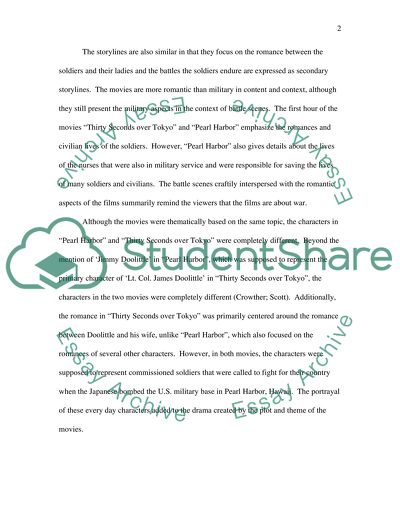Cite this document
(“Comparison of Thirty Seconds over Tokyo and Pearl Harbor Essay”, n.d.)
Comparison of Thirty Seconds over Tokyo and Pearl Harbor Essay. Retrieved from https://studentshare.org/visual-arts-film-studies/1578297-comparison-of-thirty-seconds-over-tokyo-and-pearl-harbor
Comparison of Thirty Seconds over Tokyo and Pearl Harbor Essay. Retrieved from https://studentshare.org/visual-arts-film-studies/1578297-comparison-of-thirty-seconds-over-tokyo-and-pearl-harbor
(Comparison of Thirty Seconds over Tokyo and Pearl Harbor Essay)
Comparison of Thirty Seconds over Tokyo and Pearl Harbor Essay. https://studentshare.org/visual-arts-film-studies/1578297-comparison-of-thirty-seconds-over-tokyo-and-pearl-harbor.
Comparison of Thirty Seconds over Tokyo and Pearl Harbor Essay. https://studentshare.org/visual-arts-film-studies/1578297-comparison-of-thirty-seconds-over-tokyo-and-pearl-harbor.
“Comparison of Thirty Seconds over Tokyo and Pearl Harbor Essay”, n.d. https://studentshare.org/visual-arts-film-studies/1578297-comparison-of-thirty-seconds-over-tokyo-and-pearl-harbor.


